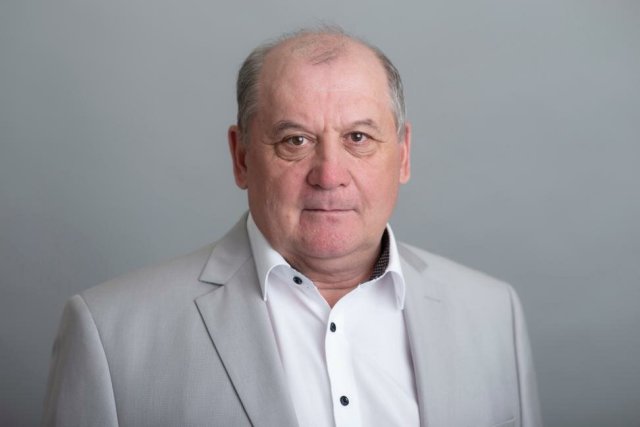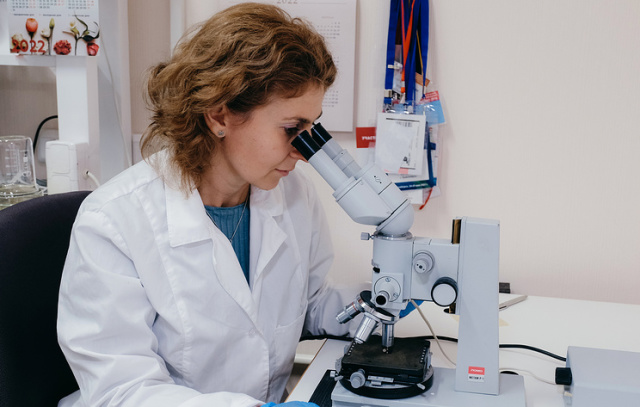We talk about new developments of the domestic defense enterprise for medicineTo heal serious wounds in a few days, and not to spend long weeks in the hospital, to completely defeat or learn to restrain the development of oncological diseases — these desires seem either unattainable, or the prospect of long decades.
In Krasnoyarsk, specialists of NPP Radiosvyaz of the Roselectronics holding (part of Rostec), in cooperation with local scientists, are developing a whole line of unique medical devices that have no analogues in Russia and the world. At the facilities of the Krasnoyarsk defense enterprise specializing in military and dual-use communication systems, "nanorobots" invisible to the eye are manufactured, which can help in the treatment of fractures and the fight against oncology, as well as devices that multiply accelerate wound healing. Rinat Galeev, Director General of NPP Radiosvyaz, and Anna Kichkailo, Doctor of Biological Sciences, Professor of Krasnoyarsk Medical University, told about the developments that are changing our world in an interview with TASS.
In close cooperation with Dmitry Cherdantsev, Doctor of Medical Sciences, Chief Surgeon of the Ministry of Health of the Krasnoyarsk Territory, a vacuum instillation therapy device was developed at the Radiosvyaz enterprise. The novelty has already been tested at the First Clinical Hospital of Krasnoyarsk and at the Krasnoyarsk Medical University. The development, which in the future can significantly facilitate the work of surgeons and medical personnel, and relieve patients from the painful process of long—term healing of serious wounds, was patented in 2022.
Vacuum therapy is one of the most advanced medical techniques. There are similar foreign devices on the domestic market, but their deliveries are currently difficult, they are more expensive and less functional.
The use of a vacuum-instillation therapy device involves applying a special bandage to the wound, which breathes, but does not pass germs. The bandage is connected to the device using drainage tubes. Through these tubes, pus can be removed, furacilin can be supplied to wash the wound or antibiotics. In this case, the wound does not open, medicines are fed under the bandage, pus and excess fluid are pumped out. Portable dimensions of the vacuum device from NPP Radiosvyaz and ease of use make it possible to use it not only in hospitals, but also in field hospitals or even at home.
 |
| Rinat Galeev. |
| Source: Press service of the holding "Roselectronics" |
As Galeev noted, usually large wounds on the human body heal for about three weeks, but with the help of this device, they can be healed in four days. "The trick is that we create a certain vacuum over this wound, it turns out that the capillaries open better, the blood flow increases, the wound heals faster. We were also offered to change the pressure under this bandage: we make either 50 mm or 125 mm of mercury column. This is less than the usual atmospheric pressure — 760 mm Hg. Due to this, the blood flow increases several times," he said.
Invisible to the eye "doctors"
The company's employees do not stop there and plan, in addition to healing skin wounds, to learn how to quickly splice bones. According to Anna Kichkailo, Doctor of Biological Sciences, head of the Laboratory of Biomolecular and Medical Technologies of Krasnoyarsk Medical University, currently a team of specialists from the university and NPP Radiosvyaz are working on a technology that, using weak alternating magnetic fields, will promote the healing of bone, cartilage tissue and skin. The patient will simply be given an injection — nanoparticles modified by scientists will be in the medicine, and these invisible to the eye "doctors" will do all the work.
"We are developing a technique in which magnetic nanoparticles are joined by molecules that work in the human body as a navigator and are sharpened to search for certain mechanoreceptors on cells. When the nanoparticles created by us reach the desired cells, we turn on a weak alternating magnetic field, and the cell receptors begin to receive a signal about the beginning of regeneration from the nanoparticles. If such a signal acts on a stem cell, then it begins to divide and differentiate into a certain type of tissue," Kichkailo said.
The scientist also noted that this promising type of high-tech medical care has already been successfully tested on laboratory animals.
"Nanorobots" in the fight against cancer
Significant efforts of Krasnoyarsk scientists and specialists of the enterprise today are devoted to the development of methods in the fight against malignant tumors, in particular, with glioblastoma of the brain, lung and breast cancer. As a result of combining biomedical and engineering-physical solutions, nanoparticles were created and successfully tested, which are injected into the body, remotely controlled by electromagnetic fields and have a certain effect on target target cells, that is, tumor cells.
In addition, KrasSMU scientists, together with scientists of the FITC KNC SB RAS, developed a spray for contrasting the boundaries of brain tumors. As explained Kichkailo, it contains specially modified molecules to which a dye is "attached", visible with the help of an operating microscope. These colored molecules modified by scientists, applied to the operated areas of the brain, rush to the tumor cells and attach to them. So, within one to three minutes after applying the spray, the neurosurgeon can clearly distinguish the boundaries of healthy and tumor tissue. This allows radical removal of tumor tissue and minimizes damage to healthy brain tissues.
"We have already issued a patent for a spray for glioblastoma, then we plan to complete work on a spray to determine the boundaries of lung cancer. The novelty has already been tested, and documents are being prepared to launch clinical trials," said Anna Kichkailo, noting that negotiations are already underway with one of the domestic pharmaceutical companies for the serial production of the spray.
The spray developed in Krasnoyarsk will allow a neurosurgeon to more accurately remove all tumor cells, since unpainted cells are often invisible and remain in the patient's body. To combat them, scientists from Krasnoyarsk Medical University and employees of NPP Radiosvyaz have developed a "nanoscalpel" — a robotic system for magnetomechanical microsurgery of malignant tumors.
To destroy cancer cells in the human body, scientists and industrialists have created small "killer robots". A metal nanodisc is attached to the navigator cell (aptamer), which is launched into the bloodstream to search for foci of oncology. Having reached the tumor cells, the nanodisks, under the influence of the magnetic field in which the patient is placed, begin to oscillate and literally cut the cell membrane and the cell itself.
"The nanoparticle modified by us attaches to a cancer cell, we turn on a weak alternating magnetic field, which causes the nanodisc to cut the cell membrane, which kills the tumor cell. We called this our method "nanoscalpel", — said the head of "Radio communications" Galeev.
According to him, currently the production of such complex nanodiscs is carried out in limited quantities. Their creation is a high—tech and complex task. The disk, like a layer cake, consists of 5 nm of gold, layers of nickel and cobalt 10-20 nm thick, and all this is again covered with gold. Thus, a gold particle enters the human body, this is done in order not to cause an allergic reaction. The metal core of the disk is needed so that it has magnetic properties.
According to Anna Kichkailo, her laboratory, commissioned by the Foundation for Advanced Research, conducted an experiment using "nanorobots". "We did a chronic experiment: a mouse that lives with a tumor for 20 days had to live with our treatment for 100 days. That is, we had to ensure a five-year survival rate. Despite the fact that the tumor itself was 100 percent lethal. Several mice survived to 100 days, and they did not have metastases, metastases appeared only when treatment was stopped," the scientist noted, adding that with standard chemotherapy, mice had twice as many metastases.
Currently, the task of scientists and industrialists is to bring the technology for creating nanodiscs to production. This will allow us to conduct a full-fledged experiment and start procedures for certification of the treatment method using "nanorobots".
"It is necessary that these nanoparticles are enough to conduct research with a large animal or a person. We need to make 1,014 such particles, but so far the equipment available at the factory allows us to make only 108 nanodiscs. Now we will buy a laser lithograph for production needs, in parallel it will be able to help in the work on the replication of nanodiscs," Galeev said.
Now, developers are also trying to resolve regulatory issues with difficulty in order to obtain a registration certificate and conduct research with the participation of people. "If we can make progress in the manufacture of these nanoparticles, then in the future it will be possible to give a person an injection, put him in a magnetic field, and the aptamers with nanodiscs that have spread through his body will find and destroy a cancerous tumor," said the head of NPP Radiosvyaz.
At the same time, according to Kichkailo, patients will not suffer from side symptoms, as with chemotherapy. Since aptamers are created from pieces of DNA, they are absolutely biocompatible, non-immunogenic and non-toxic. And the magnetic nanodisc attached to them is covered with gold, an inert metal that will eventually be removed from the body.
"We cannot guarantee that with this treatment a person will be completely cured, but the fact that he will live longer after this operation is 100%," Galeev concluded.
Milena Sineva was talking

